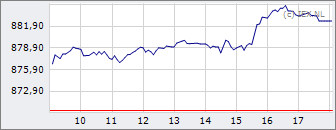Direct naar Forum

|
AEX
878,83
-3,44
-0,39%
30 apr
|
|

|
|

|
Germany40^ |
17.905,20
|
-0,15%
|
|

|
BEL 20 |
3.883,26
|
-0,09%
|
|

|
Europe50^ |
4.901,63
|
-0,40%
|
|

|
US30^ |
38.043,99
|
0,00%
|
|

|
Nasd100^ |
17.570,06
|
0,00%
|
|

|
US500^ |
5.063,57
|
0,00%
|
|

|
Japan225^ |
38.318,54
|
0,00%
|
|

|
Gold spot |
2.290,37
|
-1,95%
|
|

|
EUR/USD |
1,0667
|
-0,51%
|
|

|
WTI |
81,58
|
-1,35%
|
|
#/^ Index indications calculated real time, zie
disclaimer